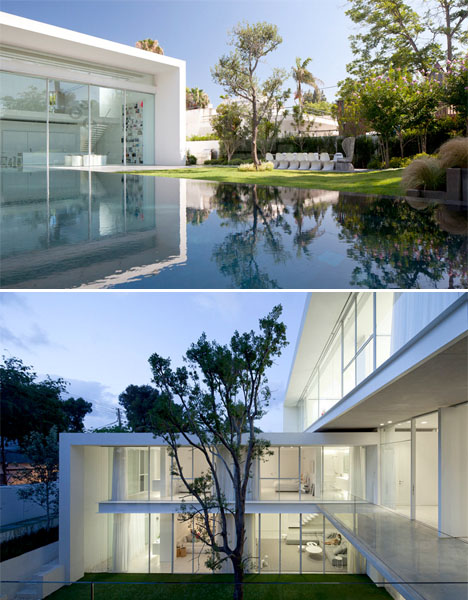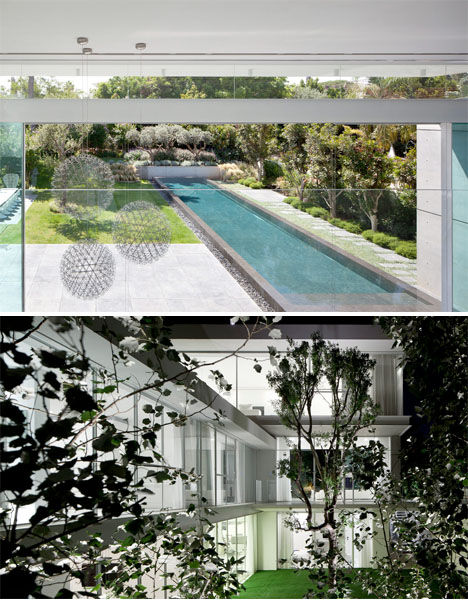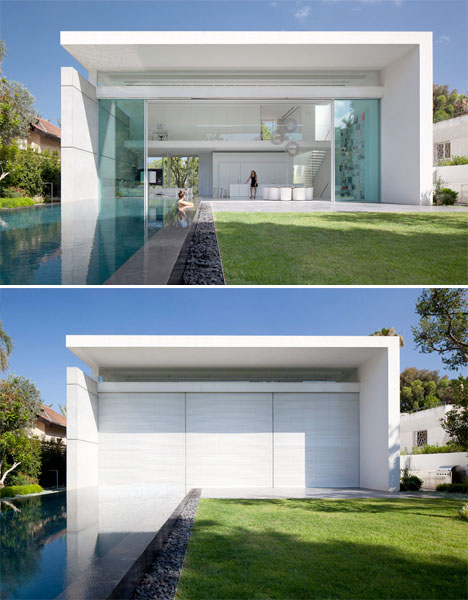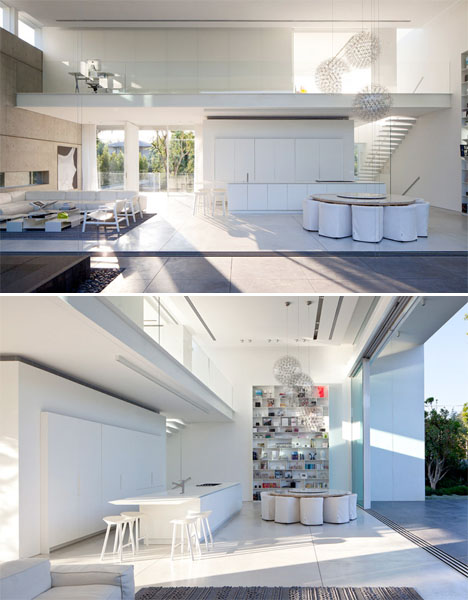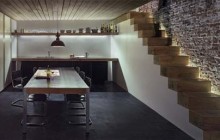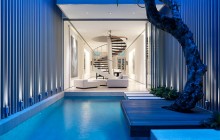Dornob | Design Ideas Daily |
| Double Courtyards Flood Modern Cube House with Light Posted: 23 Nov 2013 08:00 AM PST
Two courtyards, reflecting pools and lots of glass ensure that the interior of this stunning modern home in Israel is always filled with plenty of natural light. The cubic home finished in matte white features an elongated bridge crossing a sunken front courtyard, which leads to a double-height, minimally furnished monochromatic living area.
‘Ramat Hasharon House 13′ by Pitsou Kedem Architects is a private residence that emphasizes connection to outdoor spaces from each and every corner of the home.
The glazed facade of the home leads directly out onto the rear courtyard and 65-foot-long swimming pool, the walls receding at both sides to completely open to the outdoors. This entire facade can be closed and covered for security and privacy.
Inside, the home is bright and open, with only a few spaces closed off to the rest of the interior. Various glazed doors and balconies overlook the grassy front courtyard, maintaining visual contact with greenery and the sky. |
| Free-Form Plastic Manufacturing Yields Spontaneous Shapes Posted: 22 Nov 2013 02:00 PM PST
As part of Shahar Kagan‘s final project at Holon Institute of Technology in Israel, he explored why mistakes sometimes happen in the manufacturing process and objects come out looking far different than intended. The result of his exploration is a truly beautiful bunch of home objects that don’t conform to our expectations of shape or form.
Kagan uses recycled plastics that were once plastic shopping bags. He pours the plastic into molds, but not in a mechanical, predictable way – he keeps his creations unique by shying away from set-in-stone methods. Instead, the industrial designer lets the materials take on odd, spontaneous shapes.
Unsurprisingly, no manufacturers were willing to let Kagan use their material to conduct his manufacturing experiments. To achieve his goals, he had to build his own machine – the Extruder – and teach himself how to invent the objects he wanted to see.
The objects created in this way are useful and, perhaps unexpectedly, quite graceful in their own way. They display fluid lines and just the kind of spontaneity that Kagan was hoping to achieve. |
| You are subscribed to email updates from Dornob To stop receiving these emails, you may unsubscribe now. | Email delivery powered by Google |
| Google Inc., 20 West Kinzie, Chicago IL USA 60610 | |

